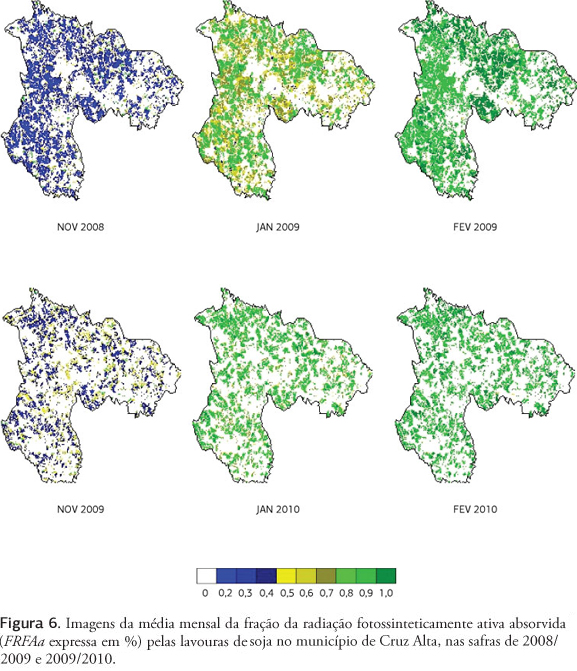The objective of this study was to test a methodology of data generation of the spatial and temporal distribution of the absorbed photosynthetically active radiation (RFAa) by the soybean crop based on the quantification of the relation between the normalized difference vegetation index (NDVI) and the fraction of absorbed photosynthetically active radiation (FRFAa) by the crop. The study covered the county of Cruz Alta, one of the largest producers of soybean in Rio Grande do Sul, Brazil, during the period of two harvest seasons: 2008/09 and 2009/10. The data of the incident photosynthetically active radiation (RFAi) were collected on the experimental area and the orbital data came from two platforms: Landsat/TM and Terra/MODIS, both with free distribution, but with distinct characteristics. A simple linear relation was established between the NDVI of the MODIS images and the FRFAa, obtained during two important periods of the cycle: sowing and maximum plant growth. The results showed that there is an association between the NDVI and the FRFAa that can, therefore, be used on the generation of RFAa data by the soybean crop throughout the development cycle, allowing the temporal monitoring of this element.
NDVI; Glycine max; correlation










